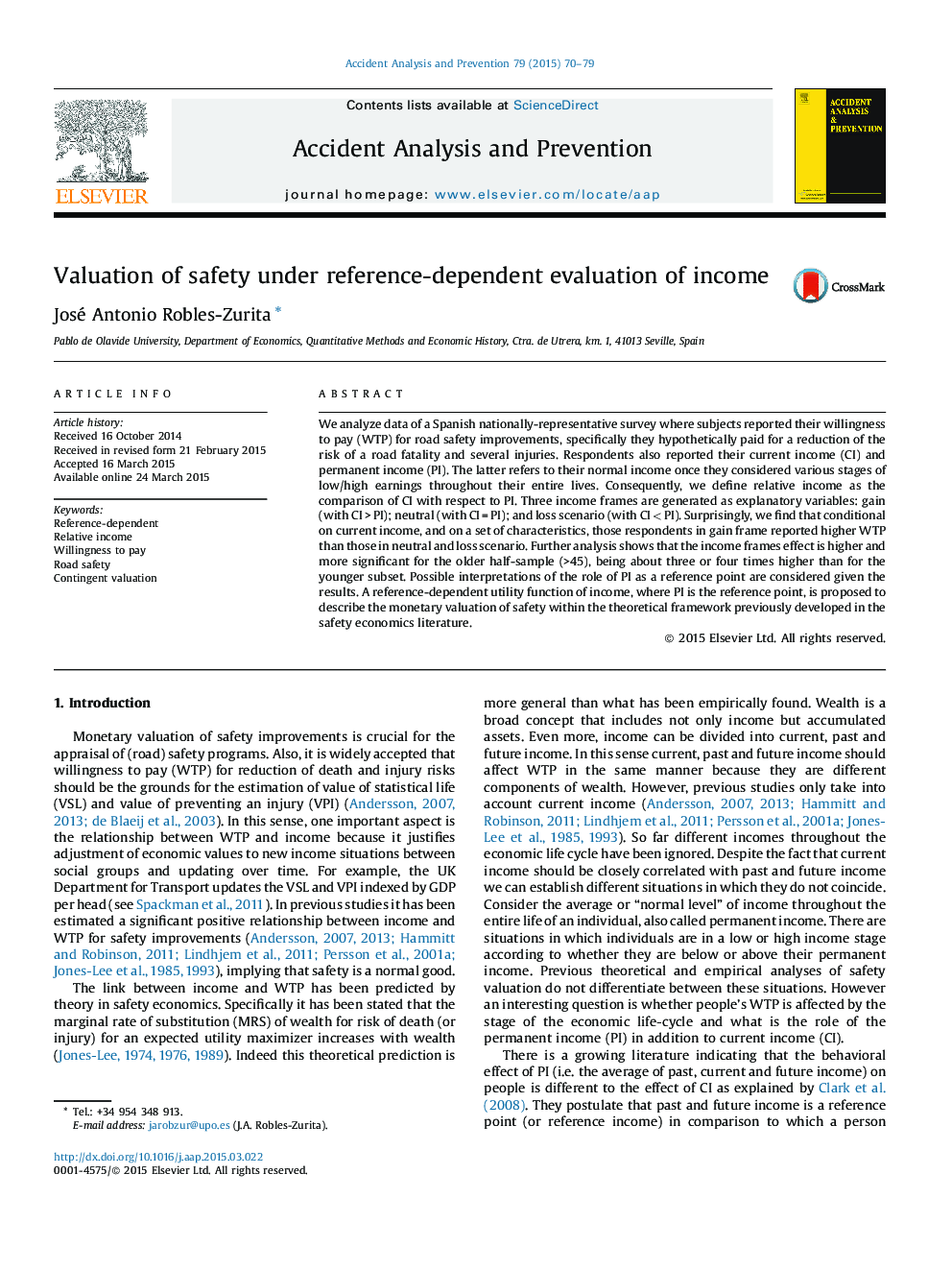| Article ID | Journal | Published Year | Pages | File Type |
|---|---|---|---|---|
| 572166 | Accident Analysis & Prevention | 2015 | 10 Pages |
•Subjects reported willingness to pay for road safety improvements.•Subjects are classified according to their current income and permanent income.•Safety valuation is higher for subjects with permanent income below current income.•The effect found is higher and more significant for the oldest respondents.•A reference-dependent utility function is considered to account for the results.
We analyze data of a Spanish nationally-representative survey where subjects reported their willingness to pay (WTP) for road safety improvements, specifically they hypothetically paid for a reduction of the risk of a road fatality and several injuries. Respondents also reported their current income (CI) and permanent income (PI). The latter refers to their normal income once they considered various stages of low/high earnings throughout their entire lives. Consequently, we define relative income as the comparison of CI with respect to PI. Three income frames are generated as explanatory variables: gain (with CI > PI); neutral (with CI = PI); and loss scenario (with CI < PI). Surprisingly, we find that conditional on current income, and on a set of characteristics, those respondents in gain frame reported higher WTP than those in neutral and loss scenario. Further analysis shows that the income frames effect is higher and more significant for the older half-sample (>45), being about three or four times higher than for the younger subset. Possible interpretations of the role of PI as a reference point are considered given the results. A reference-dependent utility function of income, where PI is the reference point, is proposed to describe the monetary valuation of safety within the theoretical framework previously developed in the safety economics literature.
